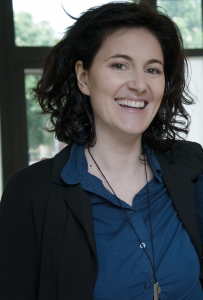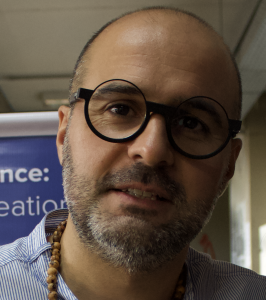Call for Special Track Papers
Call For Special Track Papers on
Exploring Digital Innovation:
Transforming Arts, Education, and Therapy
with Musical Interfaces and Emerging Technologies
Notification deadline
- 10 September 2025
Camera-ready deadline
- 10 October 2025
Notification deadline
- 1st August 2024
Camera-ready deadline
- 20th August 2024
Scope and Objectives
The integration of Artificial Intelligence (AI) and Digital Musical Instruments (DMIs) is transforming the fields of arts, education, music therapy, and rehabilitation. This Special Track invites researchers, educators, therapists, and artists to explore how these technologies can revolutionize creative expression, teaching methodologies, and therapeutic practices.
Musical interfaces have evolved significantly, from early computer music explorations to contemporary applications in interactive art and therapy. Emerging technologies, in particular, offer personalized learning experiences in music education, adapting to individual student needs and providing real-time feedback. Furthermore, the convergence of AI, DMIs, and Extended, Augmented, and Virtual Reality (XR, AR, VR) opens new dimensions for immersive musical experiences, enhancing accessibility, embodiment, and multimodal interaction in creative and therapeutic contexts.
This Special Track seeks to delve into the multifaceted applications of and the convergence of these emerging technologies, emphasizing their roles in shaping new frontiers of creativity and inclusivity.
Special Track Topics
- Collaborative and interdisciplinary approaches in musical interface research and practice.
- Case studies on AI and DMIs applications in music therapy and rehabilitation.
- Development and use of DMIs for students with diverse learning needs.
- Innovative teaching methodologies incorporating AI in arts and inclusive educational settings.
- Ethical considerations in employing AI and DMIs.
- Future directions and emerging trends in musical interfaces and Interactive Art.
By focusing on these areas, the Special Track aims to foster interdisciplinary collaboration and highlight the transformative potential of AI and DMIs in enhancing learning and therapeutic outcomes.
Special Track Chairs
 Elena Partesotti
Elena Partesotti
University of Campinas (Unicamp), Brazil
Dr. Elena Partesotti is a Postdoctoral Researcher at Unicamp, collaborating between the Brazilian Institute of Neuroscience (BRAINN) and the Interdisciplinary Nucleus for Sound Studies (NICS). Her interdisciplinary research spans various fields, including the development of Extended Digital Musical Instruments (DMIs) prototypes for rehabilitative, creative, and performative purposes, as well as exploring topics such as philosophy of mind, music cognition, music therapy, behavioral processes, dance networks and art installations. Elena holds an International Doctorate Cum Laude on Music Technology in rehab from the University of Valladolid, Spain, and Unicamp University, Brazil, where she also patented an EDMI called E-MOCOMU. Elena has contributed to the design and investigation of music technology as a multimodal and interactive therapeutic tool. She has been the first to integrate concepts such as Creative Empowerment, Virtual Affordances, and Embodied Cognition into rehabilitation, particularly within the field of music therapy, using EDMIs. In addition to her research, she also serves as an Associate Editor for the International Journal of Art Therapy and as a guest Editor for the Nordic Journal of Music Therapy, contributing to a Special Issue on art and music technology for rehabilitative purposes.
 Bruno Azevedo
Bruno Azevedo
Centro ALGORITMI, engageLab – University of Minho, Portugal
Bruno Azevedo is Assistant researcher at Algoritmi Research Center – engageLab which is an interdisciplinary laboratory at the intersection of art, science, and technology at the University of Minho – Portugal. He is a European Alliance for Innovation (EAI) Distinguished Member and his ArtsIT2023 publication won best paper award.
He worked as Postdoc researcher at the Digital Humanities Group of the Center for Humanistic Studies at the University of Minho under the project PortLinguE, where he worked on information visualization, user interface and user experience design. He also worked as user experience, user interface design and information visualization researcher in a multidisciplinary project, namely 6.849,32 New Scientific Journal Articles Everyday: Visualize or Perish! We also worked as a post-Doc researcher in the INNOVATIVE CAR HMI a partnership between the University of Minho and Bosch, in the project line P6.8.9 Cockpit of The Future: HMI Concepts and Functions, in Intelligent adaptive interfaces, machine learning, usability, and user experience.
He also teaches Information Visualization and Data Analysis as an invited assistant professor in the Digital Humanities Master’s Degree Program of the Institute of Arts and Humanities, Digital Fabrication and 3D Modeling and Animation in the Visual Arts Bachelor of the School of Architecture, Art and Design of the University of Minho.
His current research focus merges aesthetic information visualization, Zazen meditation, neuroscience, and computational immersive environments.
Special Track Technical Program Committee Members
- Artemis Moroni, CTI Renato Arche, Brasil
- Bruno Azevedo, Centro ALGORITMI, engageLab – Universidade do Minho, Portugal
- Micael Antunes, Laboratoire PRISM, Marseille, France
- Elena Partesotti, University of Campinas (Unicamp), Brazil
Publication
All registered papers will be submitted for publishing by Springer – LNICST series and made available through SpringerLink Digital Library: ArtsIT Conference Proceedings.
Proceedings will be submitted for inclusion in leading indexing services, such as Web of Science, Compendex, Scopus, DBLP, EU Digital Library, Google Scholar, IO-Port, MathSciNet, Inspec, and Zentralblatt MATH.
Available Journals
All accepted authors are eligible to submit an extended version in a fast track of:
- EAI Endorsed Transactions on Creative Technologies
- EAI Endorsed Transactions on AI and Robotics
- EAI Endorsed Transactions on Internet of Things (Scopus)
Authors have the opportunity to publish their articles in the EAI Endorsed Transactions journal selected by the conference (Scopus, Ei-indexed, ESCI-WoS, Compendex) by paying an additional $250, discounted from the standard $400 rate for conference authors.
The article’s publication is subject to the following requirements:
- It must be an extended version of the conference paper with a different title and abstract. In general, 30% of new content must be added.
- The article will be processed once the conference proceedings have been published.
- The article will be processed using the fast-track option.
- Once the conference proceedings are published, the corresponding author should contact us at [email protected] with the details of their article to begin processing.
Additional publication opportunities:
- EAI Transactions series (Open Access)
- EAI/Springer Innovations in Communications and Computing Book Series
(titles in this series are indexed in Ei Compendex, Web of Science & Scopus)
Paper Submission
Papers should be submitted through EAI ‘Confy+‘ system, and have to comply with the Springer format (see Author’s kit section).
– Regular papers should be up to 12-20 pages in length.
– Short papers should be 6-11 pages in length.
All conference papers undergo a thorough peer review process prior to the final decision and publication. This process is facilitated by experts in the Technical Program Committee during a dedicated conference period. Standard peer review is enhanced by EAI Community Review which allows EAI members to bid to review specific papers. All review assignments are ultimately decided by the responsible Technical Program Committee Members while the Technical Program Committee Chair is responsible for the final acceptance selection. You can learn more about Community Review here.
Submission Guidelines
Paper submission
Papers should be submitted through EAI ‘Confy+‘ system, and have to comply with the Springer format (see Author’s kit section below).
How do I submit a paper in Confy?
- Go to Confy+ website
- Login or sign up as new user
- Select your desired Track
- Click the ‘Submit Paper’ link within the track and follow the instructions
Alternatively, go to home page of Confy+ and click on “Open conferences”.
Submission guidelines
– Papers should be in English.
– Double-Blind Review. Papers have to be submitted anonymously.
– Previously published work may not be submitted, nor may the work be concurrently submitted to any other conference or journal.
Such papers will be rejected without review.
– The paper submissions must follow the Springer formatting guidelines (see Author’s kit section below).
– Authors are required to adhere to the Publication Ethics and Malpractice Statement.
Author’s kit – Instructions and Templates
Papers must be formatted using the Springer LNICST Authors’ Kit.
Instructions and templates are available from Springer’s LNICST homepage:
Please make sure that your paper adheres to the format as specified in the instructions and templates.
When uploading the camera-ready copy of your paper, please be sure to upload both:
- a PDF copy of your paper formatted according to the above templates, and
- an archive file (e.g. zip, tar.gz) containing the both a PDF copy of your paper and LaTeX or Word source material prepared according to the above guidelines.
*As per new EU accessibility requirements, going forward, all figures, illustrations, tables, and images ought to have descriptive text accompanying them. Please refer to the document below, which will assist you in crafting Alternative Text (Alt Text).
Download HERE.


